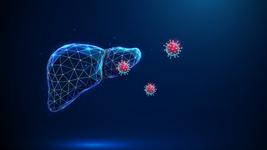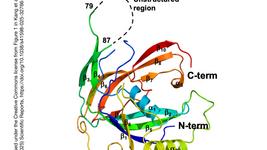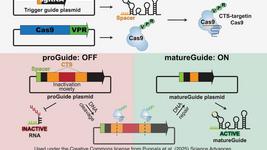Base editing rescues liver disease in organoids
Maple syrup urine disease (MSUD) results from deficiency in the branched-chain α-ketoacid dehydrogenase (BCKDH) complex, which normally breaks down branched-chain amino acids (BCAAs). When this enzyme malfunctions, BCAAs and their breakdown products accumulate to toxic levels, causing severe neurological damage.
The research team generated hepatic organoids from induced pluripotent stem cells (iPSCs) derived from a MSUD patient carrying a T322I mutation in the BCKDHB gene. These patient organoids successfully recapitulated disease characteristics, showing reduced BCKDHA and BCKDHB expression alongside elevated BCAA levels compared to healthy controls. The organoids exhibited proper hepatocyte markers and functions including glycogen storage, low-density lipoprotein uptake, and albumin secretion.
To correct the defect, researchers applied the ABE8e adenine base editor – a CRISPR-CAS tool that converts A·T to G·C base pairs without creating double-strand DNA breaks. After electroporation and selection, one organoid clone achieved 100% editing efficiency at the mutation site. Deep sequencing and whole genome analysis of 1,332 predicted off-target sites revealed no detectable unintended edits.

The corrected organoids showed restored BCKDHA and BCKDHB expression at both mRNA and protein levels, accompanied by significantly reduced BCAA concentrations (see Figure 1). RNA sequencing and single-cell analysis demonstrated that correction rescued metabolic pathways related to liver mitochondrial function, drug metabolism, and amino acid processing that were disrupted in diseased organoids.
The study was conducted by Haiyan Zhang, Zirui Wan and colleagues from the National Research Institute for Family Planning, Children's Hospital Affiliated to Shandong University and National Human Genetic Resources Center in China. It was published in Stem Cell Research & Therapy on 26 September 2025.
To get more CRISPR Medicine News delivered to your inbox, sign up to the free weekly CMN Newsletter here.
Tags
ArticleCMN BriefsNewsMetabolic disorderMetabolic disordersOrganoidsBase editors
CLINICAL TRIALS
Sponsors:
Base Therapeutics (Shanghai) Co., Ltd.
Sponsors:
Base Therapeutics (Shanghai) Co., Ltd.







